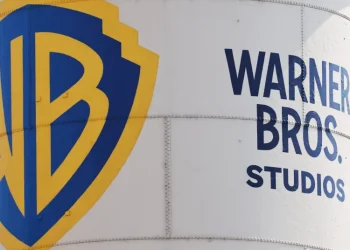Over 1,000 unionized Starbucks workers went on strike at 65 U.S. stores on Thursday to protest the lack of progress in their labor negotiations with the company. The strike, aimed at disrupting Starbucks’ Red Cup Day — one of the company’s busiest days — comes as workers demand better pay, improved working conditions, and a contract agreement.
Since 2018, Starbucks has celebrated Red Cup Day by giving away free reusable cups to customers who purchase a holiday drink. Starbucks Workers United, the union organizing the baristas, confirmed that some stores were already closed by Thursday morning and more were expected to shut down later in the day. The union said that stores in 45 cities, including New York, Philadelphia, Minneapolis, and Seattle, would be impacted.
While Starbucks claims the vast majority of its U.S. stores would remain open, the company reported that its sales for the day were on track to meet or exceed expectations at company-owned stores.
Background Behind the Strike
The strike is driven by a stalled contract agreement between Starbucks and its workers. Unionized workers first voted to unionize in Buffalo in 2021, and in December 2023, Starbucks committed to finalizing a contract by the end of 2024. However, after the ousting of former CEO Laxman Narasimhan, progress has stalled under the leadership of current chairman and CEO Brian Niccol. According to the union, bargaining sessions have been absent since April, and no significant agreements have been made.
Workers are pushing for higher pay and better working hours. Many workers, such as Pittsburgh barista Dochi Spoltore, cite difficulties in securing full-time hours and benefits. Spoltore expressed frustration with being assigned only 19 hours per week, just short of the 20 hours needed to qualify for Starbucks’ benefits.
Moreover, workers claim Starbucks has fired baristas in retaliation for unionizing and has failed to bargain over significant policy changes. These issues include Starbucks’ decision earlier this year to restrict restroom access to paying customers, a move that employees say puts additional strain on workers.
Starbucks’ Response
Starbucks, however, defends its pay and benefits package, claiming that its $30 per hour average wage, alongside benefits like 18 weeks of paid family leave and full tuition coverage, makes it one of the best in retail. In a letter to employees, the company stated that the union walked away from bargaining in spring 2023 and that some of the union’s proposals would disrupt operations, such as allowing workers to shut down mobile orders when more than five orders are queued.
Starbucks has emphasized that it remains open to discussions and believes that a reasonable deal can be reached quickly. The company also claims that employee satisfaction surveys show that most employees enjoy working for Starbucks, pointing to barista turnover rates that are half the industry average.
The Potential Impact of the Strike
The ongoing strike has sparked public attention, especially given the visibility of the workers’ actions. According to Todd Vachon, a union expert at Rutgers University, even limited strikes can draw significant attention to workers’ concerns, particularly in industries like retail where employees directly interact with customers.
Starbucks has experienced its first increase in same-store sales in nearly two years, which it attributes to various operational improvements. However, the strike and ongoing labor issues could impact the company’s public image and future sales if not resolved quickly.
Looking Ahead
The strike is open-ended, and more stores could join if an agreement is not reached soon. The union’s demands include not only better wages and working conditions but also a resolution to hundreds of unfair labor practice charges that have been filed. While Starbucks asserts that its stores are operating well, the union remains steadfast in its efforts to secure a better contract for workers.
As the strike continues, workers and Starbucks both seem to be preparing for the next steps in this ongoing battle over labor conditions, and the outcome could have lasting effects on the company’s workforce.












